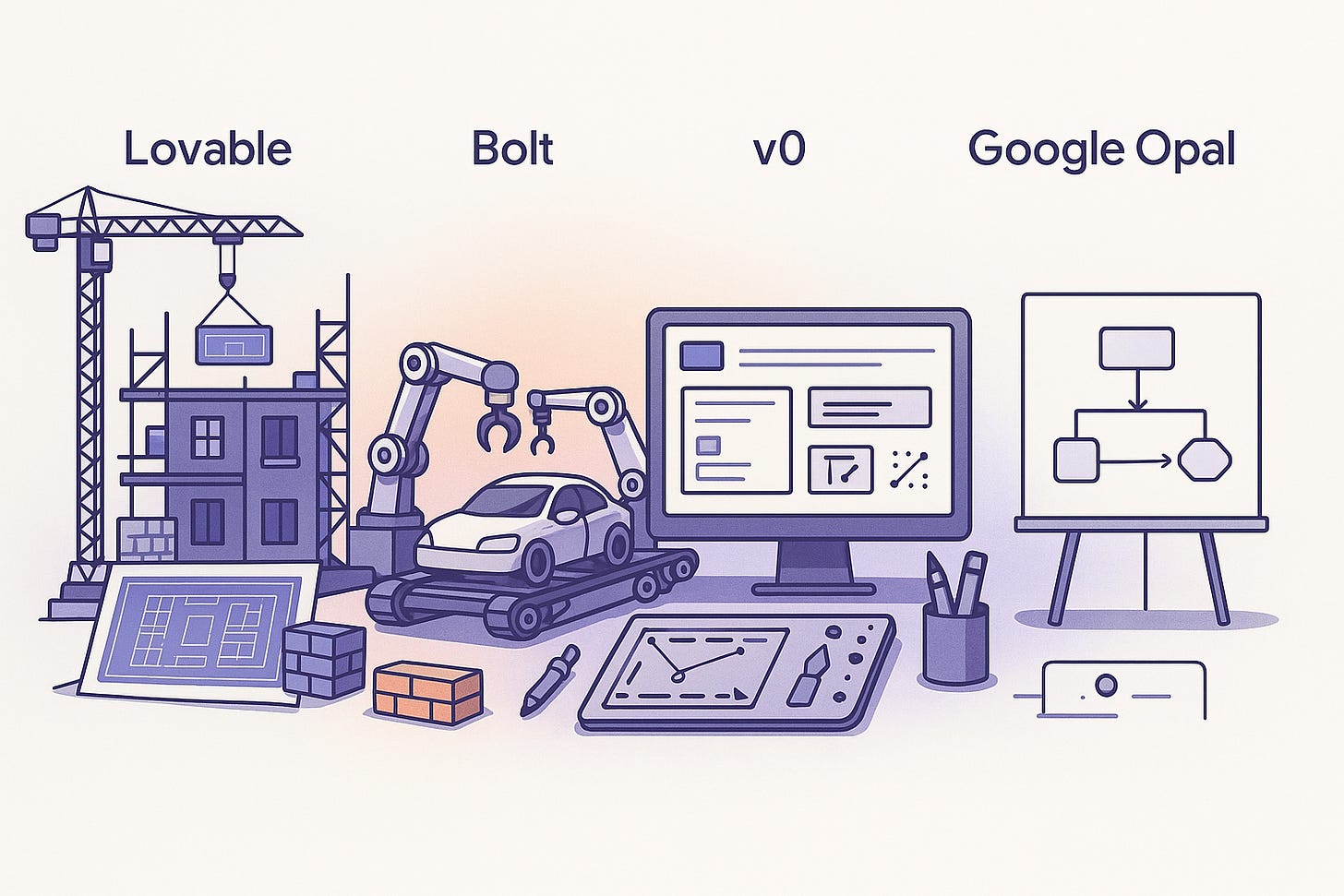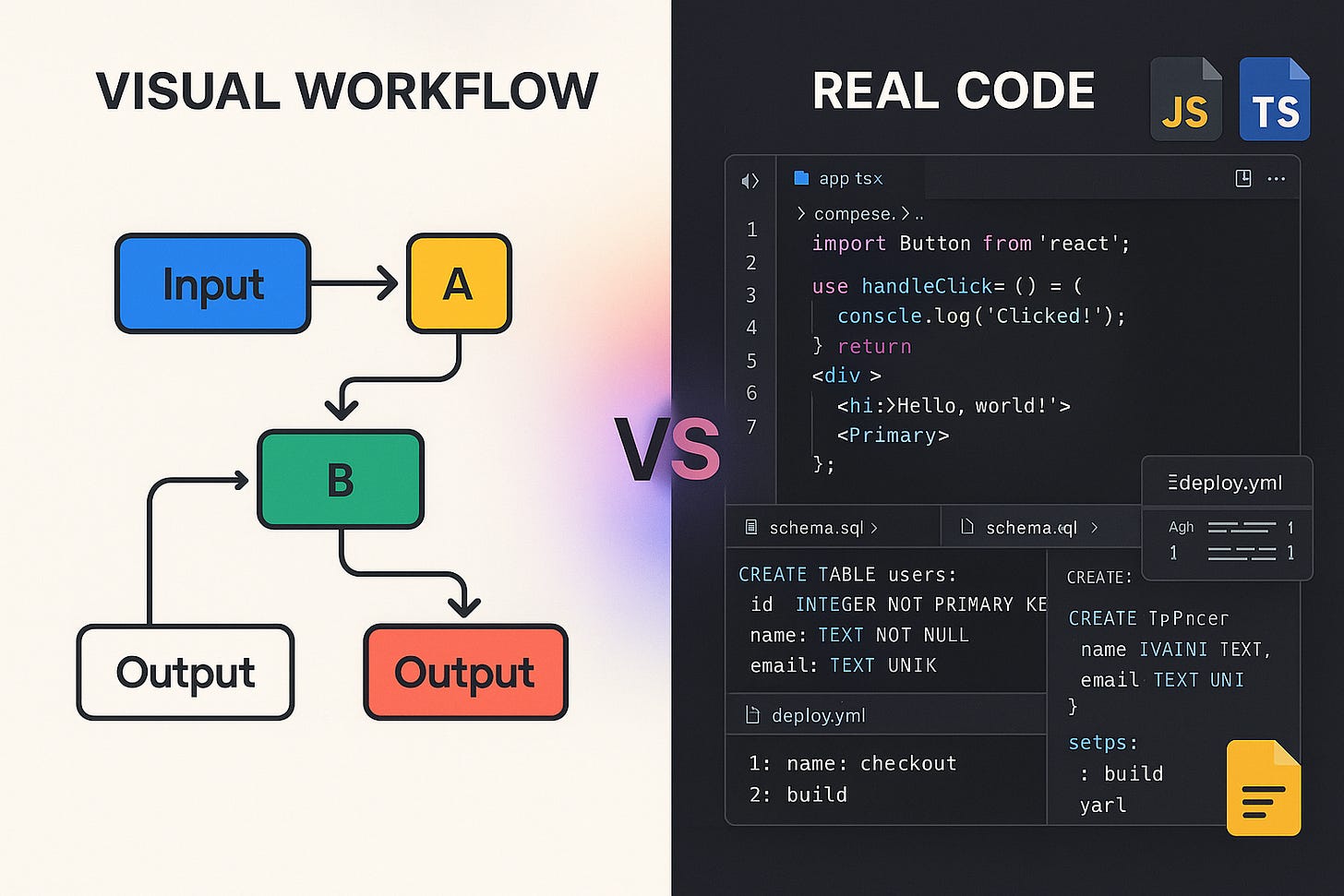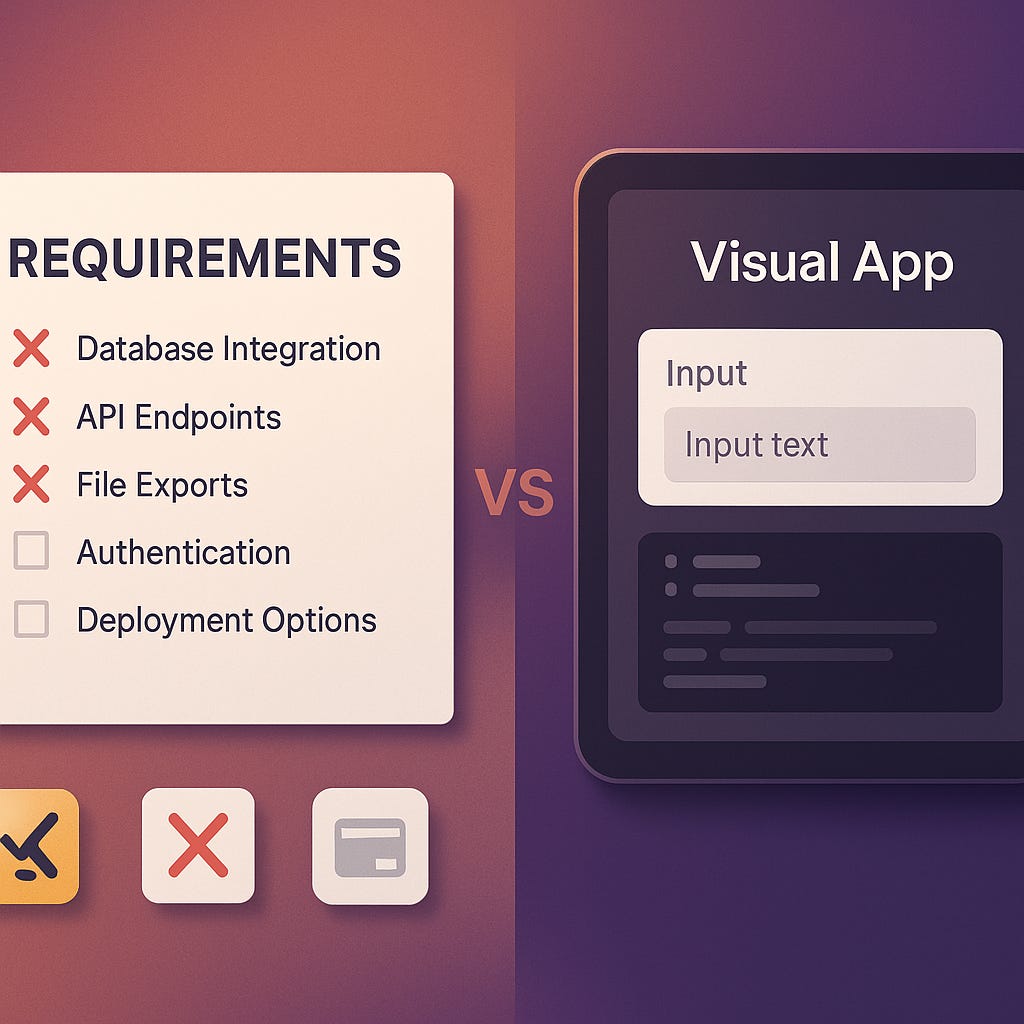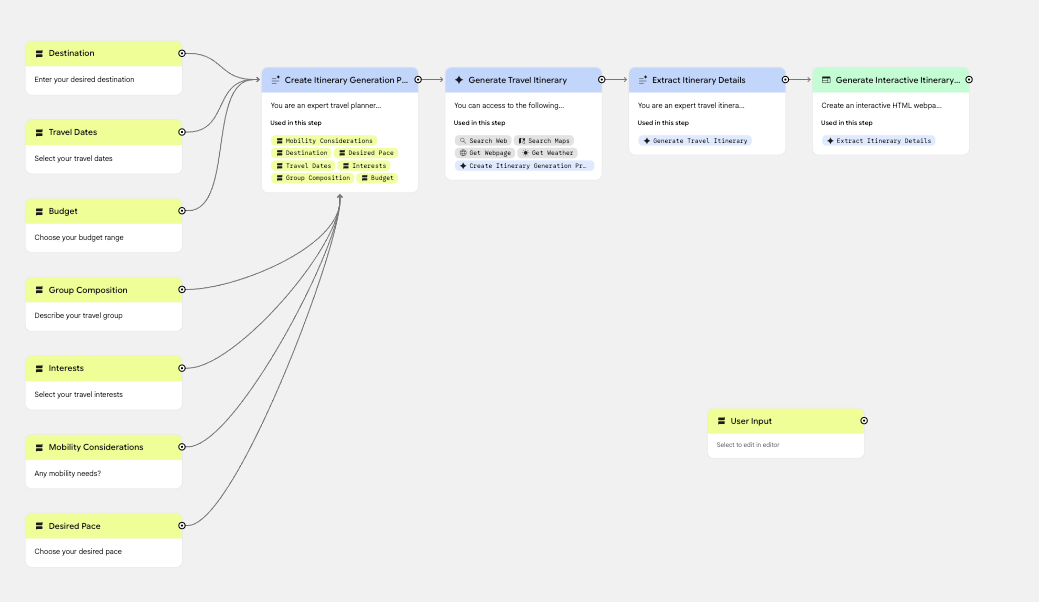When Google announced Opal, their new vibe coder entry, I had to try it. The space currently has Bolt, Lovable, Replit, and V0. Lovable leads the pack with Bolt gaining ground thanks to its Figma partnership. V0 does interesting work with API-driven vibe coding and design system integration.
So what's Opal's angle?
I'm not sure, actually. It looks more like a no-code tool than a proper coder. Maybe that's the point—point-and-click coding. I gave it a detailed prompt to build a travel intelligence platform requiring vector-based semantic search, database integration for knowledge storage, real-time data collection from multiple APIs, and export functionality including PDF generation. The system needed to handle user profiles, routing optimization, and offline capabilities.
Opal created a basic visual workflow with input nodes for "destination" and output nodes displaying text suggestions. No database schema, no API integrations, no file export capabilities. When I asked it to use form controls instead of text prompts for user input, it ignored the request entirely.
What Opal actually builds
Google's Opal creates visual workflow diagrams rather than actual code files. Users describe their app in natural language, and Opal creates a node-based flowchart showing inputs, AI model calls, and outputs.
You never see traditional code in JavaScript, Python, or React. You can edit prompts within each node, but the underlying execution stays hidden. This positions Opal closer to automation tools like Zapier than to legitimate code generation platforms.
The workflow consists of input nodes for data entry, processing nodes for AI transformations, and output nodes for displaying results. Unlike competitors that produce downloadable, deployable code, Opal apps remain locked within Google's ecosystem with no export capabilities.
Here's what struck me: this misses recent advances in deployable-code workflows that the market has embraced. Every serious vibe coder now gives you actual code you can deploy, modify, and own.
The competitive landscape Google entered
According to reports from tech publications tracking the space, Lovable raised $7.5M in Series A funding and their GitHub repository shows substantial community adoption. They generate production-ready React/TypeScript code with full GitHub integration. Their "Select to Edit" feature lets you directly manipulate components, and Supabase integration provides authentication, databases, and edge functions.
Bolt formed a strategic partnership with Figma, allowing users to transform Figma designs into production apps with one click. This integration, powered by Anima, strengthens the design-to-development workflow without requiring acquisition costs.
V0 by Vercel has carved out a niche as a UI specialist, releasing its "v0-1.0-md" model via API for premium subscribers at $20-30/month. They generate actual React components with proper TypeScript definitions.
Replit Agent offers browser-based development across 50+ languages, leveraging bounty service data where users describe projects in natural language. Their $20/month Core plan includes deployment infrastructure.
Notice the pattern? They all produce actual code. Files you can download, modify, deploy, and scale.
What developers actually said about Opal
One Medium author built an AI calisthenics assistant in 10 minutes, praising the "frictionless sharing" but acknowledging limitations for complex applications.
A Hacker News user encountered what they described as "possibly the ugliest error I have ever seen" when attempting to build a complex community gathering app. While this represents one user's experience, it illustrates the challenges Opal faces when handling multi-faceted requirements beyond simple, linear workflows.
Developer blog posts consistently describe it as "Canva, but for mini-apps." That's misaligned with what many developers prioritize in production tools.
The pattern in early feedback suggests Opal serves as a tool for rapid prototyping and idea validation rather than serious development. Success stories focus on content creation tools, productivity apps, and educational helpers—all front-end focused applications without backend complexity.
Technical gaps that matter
The technical comparison reveals fundamental problems. Opal offers no API generation, database integration, server-side logic, or authentication systems. Compare this to Lovable's native Supabase integration, Bolt's Node.js server support, or Replit's multi-language API capabilities.
Opal apps remain trapped on Google's servers with link-based sharing only. No custom domains. No GitHub integration. No export options.
This isn't just a feature gap—it suggests a different understanding of developer priorities. Developers need more than visual automation—they need control, scalability, and code portability.
My assessment: Wrong market positioning
Google Opal misses advances that define the current vibe coding movement. We're not looking for visual workflow builders. We want tools that enhance our development capabilities while maintaining code quality and control.
Industry reports estimate the low-code/no-code market at various sizes, but the value in vibe coding specifically comes from tools that generate real, deployable code. Opal's visual workflow approach exists in automation tools and adds limited value beyond integrating Google's AI models into a flowchart interface.
For complete beginners and hobbyists, Opal might find a niche. It competes more with traditional no-code tools than development platforms. But without backend capabilities, code export, or production scalability, it suggests a different understanding of where this market has moved.
It's Google, so don't count them out entirely. But personally, I found it underwhelming on key developer criteria. If you want a flexible no/low-code tool for simple workflows, this might work for you. If you want to generate actual code you can deploy and scale, stick with the established players.
The industry has moved beyond visual builders toward real code generation. Opal misses this shift into a problem we've already solved better elsewhere
.
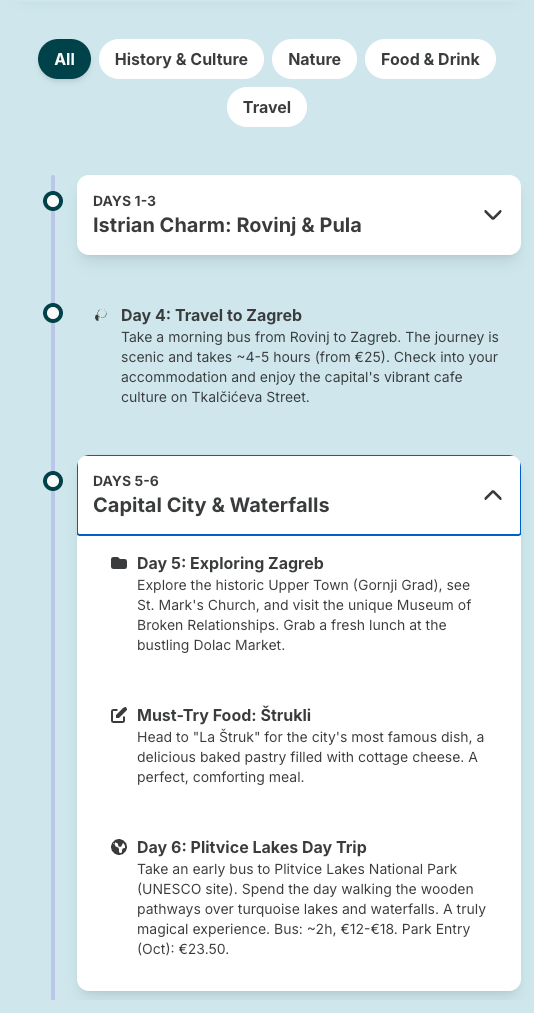
Related Reading
Google Jules First Look: Not Ready for Prime Time - my hands-on review of Google's autonomous coding agent




